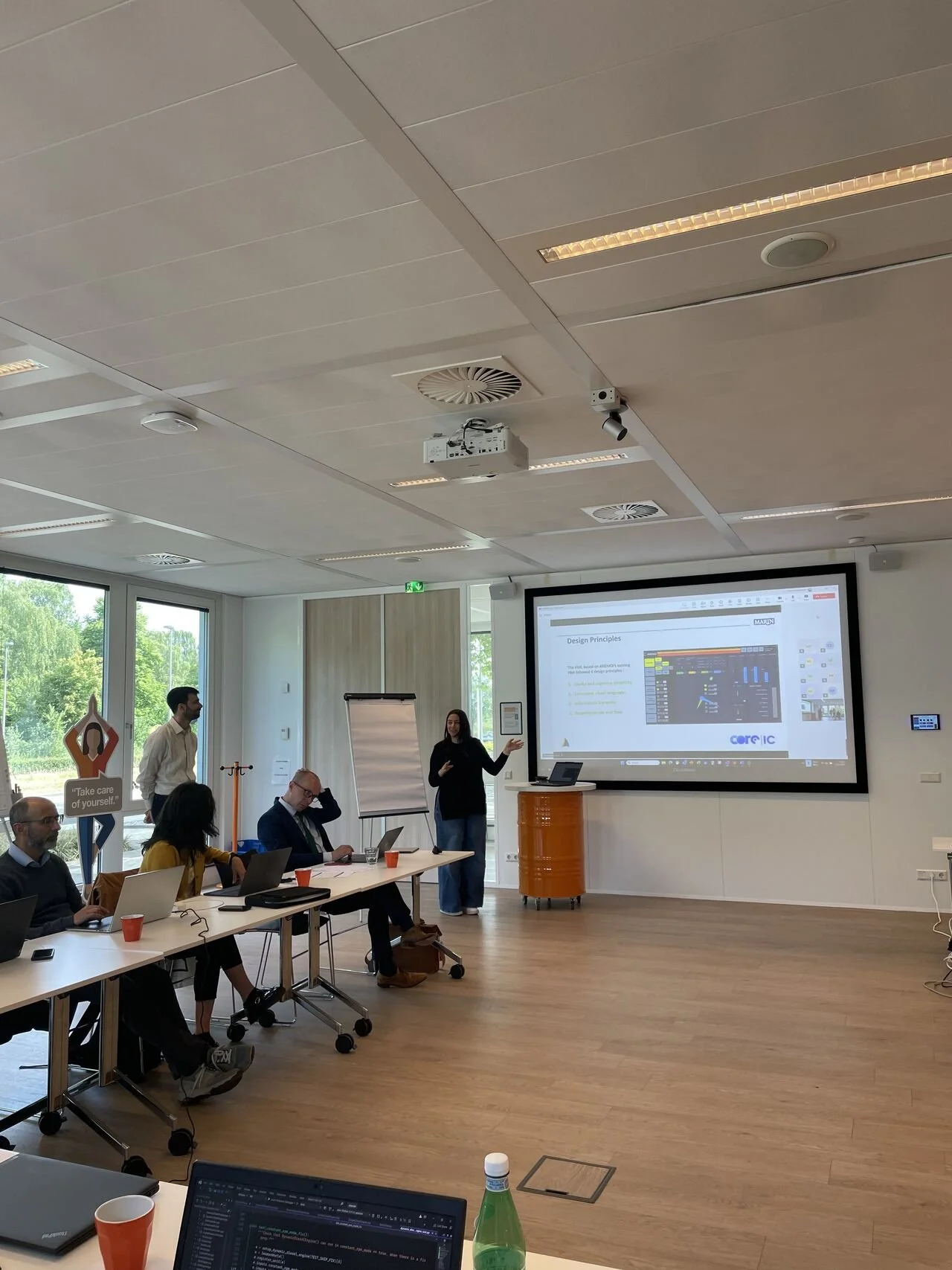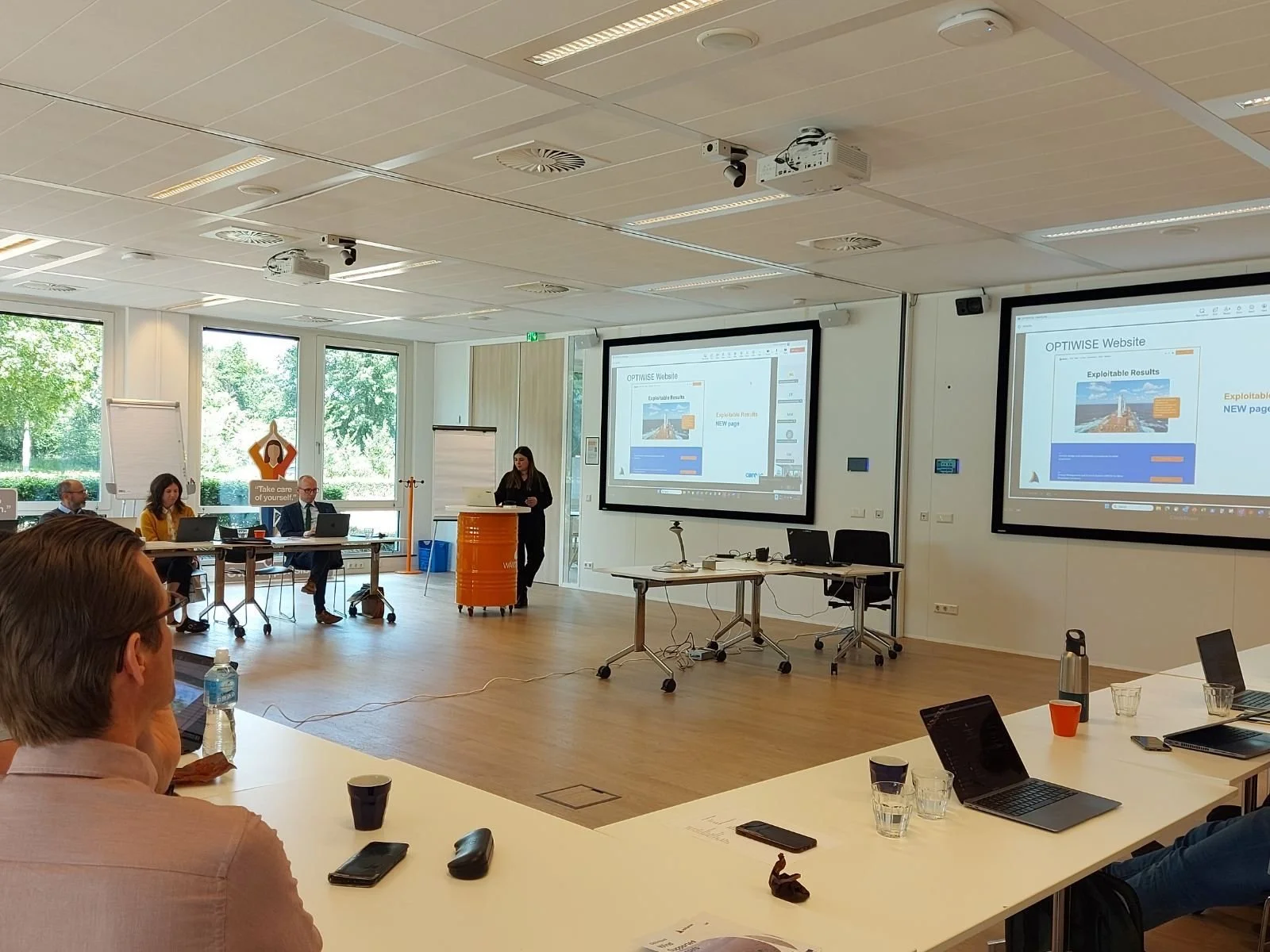The Optiwise project has reached its conclusion
Author: Maria Maniati, Maria Lentoudi, Dimitris Tampouratzis
30th July 2025
The Optiwise project has officially concluded its activities, culminating in a Final General Assembly held in May in ’s-Hertogenbosch, Netherlands, hosted at the Wärtsilä premises. This milestone marked the end of three years of intensive collaboration, innovation, and research while the project’s Final Review Meeting took place mid-July.
Launched in June 2022, Optiwise brought together a consortium of 10 partners from 7 countries. The project's primary aim was to develop and apply holistic design and control methodologies for next-generation ship concepts that integrate wind propulsion, all while accounting for realistic operational scenarios.
Over the course of the project, Optiwise delivered impressive technical advancements, focusing on the development and optimisation of the Energy Management System across two demonstration cases — the ANEMOI bulk carrier and the Chantiers de l’Atlantique passenger vessel — as well as the design of a user-oriented Human-Machine Interface, receiving broad recognition, including coverage in over 27 media articles and a featured interview in Horizon Magazine.
Project Overview
The Optiwise EU Project developed and employed holistic design and control methods for ground-breaking new ship concepts, utilising wind propulsion while considering realistic operational scenarios.
The CORE IC team led key technical tasks relating to Energy Management Systems (EMS) developed for the vessels used in the demo cases, and also worked on the design of a Human-Machine Interface (HMI) for the bulk carrier demo case. We also led on the Communication, Dissemination and Exploitation Work Package, being involved in various tasks within the project framework to expand Optiwise’s impact. More specifically, we led the project’s Wind concept and partner exploitation plan, as well as leading the Communication and dissemination plan and material and communication activities.
Development of the EMS System
Our team worked initially on the development of a generic EMS, aimed at improving energy efficiency in wind-propelled ships. This early EMS version was built around a flexible optimisation algorithm, that could adapt to different vessel setups and voyage profiles. It was developed to reduce fuel consumption by distributing energy intelligently across propulsion and auxiliary systems, including components like shaft generators, energy storage systems, and Flettner rotors. This generic EMS provided the technical backbone for the more tailored solutions that followed in the project.
Our team then customised the generic EMS for the ANEMOI bulk carrier NewCastleMax, focusing on vessels equipped with Rotor Sails. We tested two different engine room configurations: one using a 2-stroke engine with a shaft generator, and another with 4-stroke engines and a PTO/PTI setup. The CORE IC EMS helped evaluate the trade-offs between these driveline concepts, showing where fuel savings could be achieved by optimising engine load and shifting auxiliary power needs to more efficient sources. The results highlighted the importance of matching engine architecture with operational conditions, and how the EMS can support smarter energy use in wind-assisted ships.
Finally, we applied our EMS to the cruise vessel designed by Chantiers de l’Atlantique, which features a hybrid electric propulsion system with diesel generators, batteries, and Solid Sails. We fine-tuned the EMS to work with real voyage simulations, managing power flows between the various sources to cut down fuel use and keep the system running efficiently. It proved especially effective in balancing energy demands, optimising the use of battery storage, and making the most out of wind assistance. This iteration demonstrated how our EMS can support real-world hybrid configurations and contribute to cleaner, more sustainable ship operations
Designing the Human Machine Interface (HMI)
As part of the effort to support wind propulsion integration on the ANEMOI bulk carrier, our team contributed to the design of a Human-Machine Interface (HMI) that translates complex system data into actionable insights for the crew. Built around the vessel’s operational needs, the interface includes dedicated tabs for real-time monitoring, performance evaluation, and trend analysis, all structured to reduce cognitive load and support confident decision-making by the user. The CORE IC HMI focuses on usability and clarity, bridging the gap between advanced onboard systems and day-to-day operations, fostering smoother adoption of hybrid technologies and enabling crews to make the most of energy efficiency tools without added complexity.
HMI for the 2-stroke engine configuration scenario. Our EMS optimisation insights for the NewCastleMax bulk carrier are displayed in the performance tab of the HMI.
Exploitation Activities
In the Optiwise Project, CORE IC played a central role in shaping and driving the project’s innovation and exploitation strategy. As the lead partner for exploitation activities, CORE IC developed and implemented a structured, three-phase exploitation plan focused on identifying, analysing, and supporting the deployment of the project’s highest-potential innovations. This process began with the coordination and evaluation of individual exploitable results submitted by consortium partners, assessing each result’s innovation type, market relevance, and potential barriers to adoption. Building on this data, CORE IC defined the project’s Key Exploitable Results (KERs), the most valuable and commercially promising outcomes of the project. These KERs were refined through a collaborative process involving group discussions and targeted exploitation meetings with partners. Once we identified and validated the KERs and their respective owners, we led a structured prioritisation process using a multi-criteria evaluation framework comprising five criteria and ten sub-criteria. We deployed an online questionnaire to gather feedback from the consortium, which informed the selection of the three most promising KERs for more in-depth analysis.
To support this analysis, CORE IC introduced its proprietary Exploitation Canvas, a strategic tool designed to provide a comprehensive assessment of each KER across multiple dimensions, including their benefits, target markets, and unique selling points. Throughout the project, CORE IC fostered strong collaboration with technical partners, facilitated regular feedback loops, and conducted detailed assessments of market trends and barriers, particularly in the shipping sector. These efforts were made to ensure that Optiwise innovations are not only aligned with project objectives, but also equipped with clear, viable pathways for real-world impact and actual market uptake.
Dissemination and Communication Activities
The evaluation of the project’s dissemination and communication efforts revealed a strong and positive impact. Led by CORE IC, in collaboration with the University of Genoa (UNIGE), the team implemented a well-coordinated strategy in close partnership with the entire consortium to maximise the project's impact and ensure the project’s objectives were communicated effectively to relevant audiences and stakeholders.
The Optiwise website, designed and maintained by CORE IC, served as the main hub for project updates, supported by a strong presence across social media channels. Throughout the duration of the project, the consortium produced 8 high-quality videos, published 7 newsletters, and issued 7 press releases. These efforts played a crucial role in maintaining public engagement and enhancing visibility.
The consortium also engaged actively with the broader maritime and research communities. Partners participated in 14 events, delivering 20 presentations and hosting 3 exhibition booths at major international industry gatherings. The final project event, held during BlueWeek 2025, further amplified the project’s outreach and solidified its reputation within the sector.
The 8 short videos introducing the Optiwise concept and summarising its research activities are accessible via the project’s YouTube channel.
The project’s website, designed and maintained by CORE, will continue to serve as a central hub for useful information and resources for years to come. Visitors can learn more about important research activities performed and results through press-releases, newsletters, open-access scientific papers and public deliverables that can be found on the website.
The dissemination and communication activities have been instrumental in ensuring that the knowledge generated within Optiwise and its results were effectively shared with both scientific and industry communities, as well as the general public.








